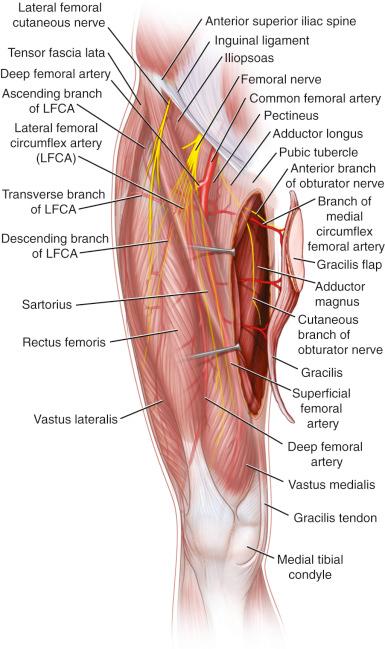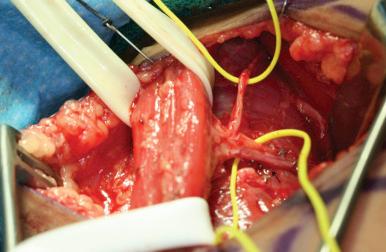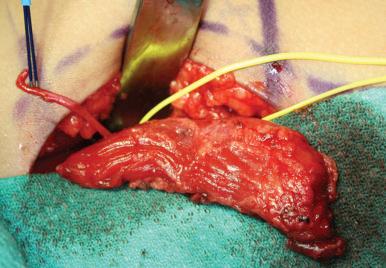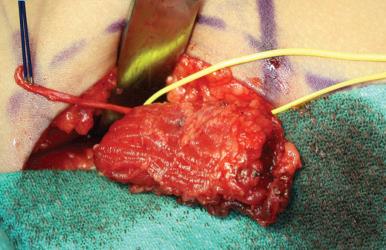Physical Address
304 North Cardinal St.
Dorchester Center, MA 02124
The gracilis flap was described in 1972 by Orticochea, as a pedicled myocutaneous flap, and the first cases included a penile reconstruction and one of calcaneal soft tissue coverage. It was one of the first myocutaneous flaps described in humans, and in 1976, Harii published a series of gracilis free flaps for soft tissue cover and, in a separate paper, a functional free gracilis for facial reanimation. Since then the flap has become one of the most widely used of all flaps due to its versatile nature, reliable pedicle, and good donor site. It is commonly utilized for soft tissue coverage, as a functional flap, and for contour deformities such as in breast reconstruction. It may be transferred as a pedicled flap, a free flap, or a perforator flap. The flap may include all of the muscle, a longitudinal segment, or a vertical segment. It may be muscle only or combined with skin (myocutaneous) and can be innervated to act as a functioning muscle. It has become one of the essential tools of the reconstructive surgeon.
The muscle takes origin from the symphysis pubis and pubic arch and inserts distally into the medial surface of the proximal tibia. It is a large strap-shaped muscle and is the most superficially located of the adductors. The muscle belly is relatively broad at its origin and tapers toward the insertion. The muscle belly length is approximately 30 cm. The distal tendon of the gracilis is round in shape but becomes a flattened sheet as it inserts into the tibia. At its distal end the muscle lies between sartorius anteriorly and semitendinosus posteriorly. The function of the muscle is to adduct, flex, and medially rotate the hip and to flex the knee.

The gracilis muscle has a type 2 vascular supply, as described by Mathes and Nahai, with one dominant and several minor vascular pedicles. The muscle is most commonly raised on the dominant pedicle only, and the entire muscle may be harvested this way. Although its pedicle is relatively consistent, some variations have been described in anatomic studies, including split and duplicate dominant pedicles.
branch of the medial femoral circumflex artery or direct branch from the profunda femoral artery
Length: 7 cm (range 6–8 cm)
Diameter: 2 mm (range 1.5–3 mm)
The main vascular supply enters the gracilis approximately 10 cm inferior to the pubic tubercle in the adult. The course of the pedicle runs deep between adductor magnus and longus and arises from either the descending branch of the medial circumflex femoral or directly from the profunda femoris artery ( Fig. 49.2 ). A large branch arises from the pedicle on the deep surface of the adductor longus and goes on to supply that muscle. Harvest of both gracilis and adductor longus on the common vascular pedicle has been described.

Minor pedicles enter the muscle distal to the main pedicle and normally arise from the superficial femoral artery. Secondary pedicles may also arise from the descending genicular artery in less than 10% of cases. There are commonly two minor pedicles but there may be up to six. It is not common to base a flap on these minor pedicles although this technique has been described.
Perforators are most common in the proximal third of the muscle in association with the dominant pedicle. Fasciocutaneous vessels arising from the fascia between gracilis and adductor longus may be present, but musculocutaneous perforators arising from the anterior part of the muscle are more common. Perforators from the minor pedicles may also be present but are not as reliable as those associated with the dominant vessel. Perforator diameters of 0.5–1 mm may be found arising from the proximal aspect of the muscle at the level of the major pedicle, making a gracilis perforator flap feasible.
venae comitantes (two) of the dominant gracilis branch
Length: 7 cm (range 5–8 cm)
Diameter: 2 mm (range 1.5–2.5 mm)
Usually two venae comitantes are found accompanying the artery. They drain into the profunda femoris vein and may converge to form a common vein a short distance before entering the profunda. The long saphenous does not make a significant contribution to drainage but may be used as a landmark as the gracilis muscle is commonly the first muscle to be found posterior to the vein.
The motor supply is from the anterior branch of the obturator nerve. This nerve arises from the obturator foramen and branches into anterior and posterior divisions beneath pectineus. The anterior division then travels between adductor longus and brevis (which it supplies) before entering the gracilis close to the location of the dominant pedicle. The nerve has a more oblique course proximally than the vascular pedicle, which lies perpendicular to the muscle and enters on its deep surface ( Figs 49.3 , 49.4 ). The nerve is at least 7–8 cm in length but up to 13 cm may be obtained by dissection back as far as the obturator foramen.


Become a Clinical Tree membership for Full access and enjoy Unlimited articles
If you are a member. Log in here